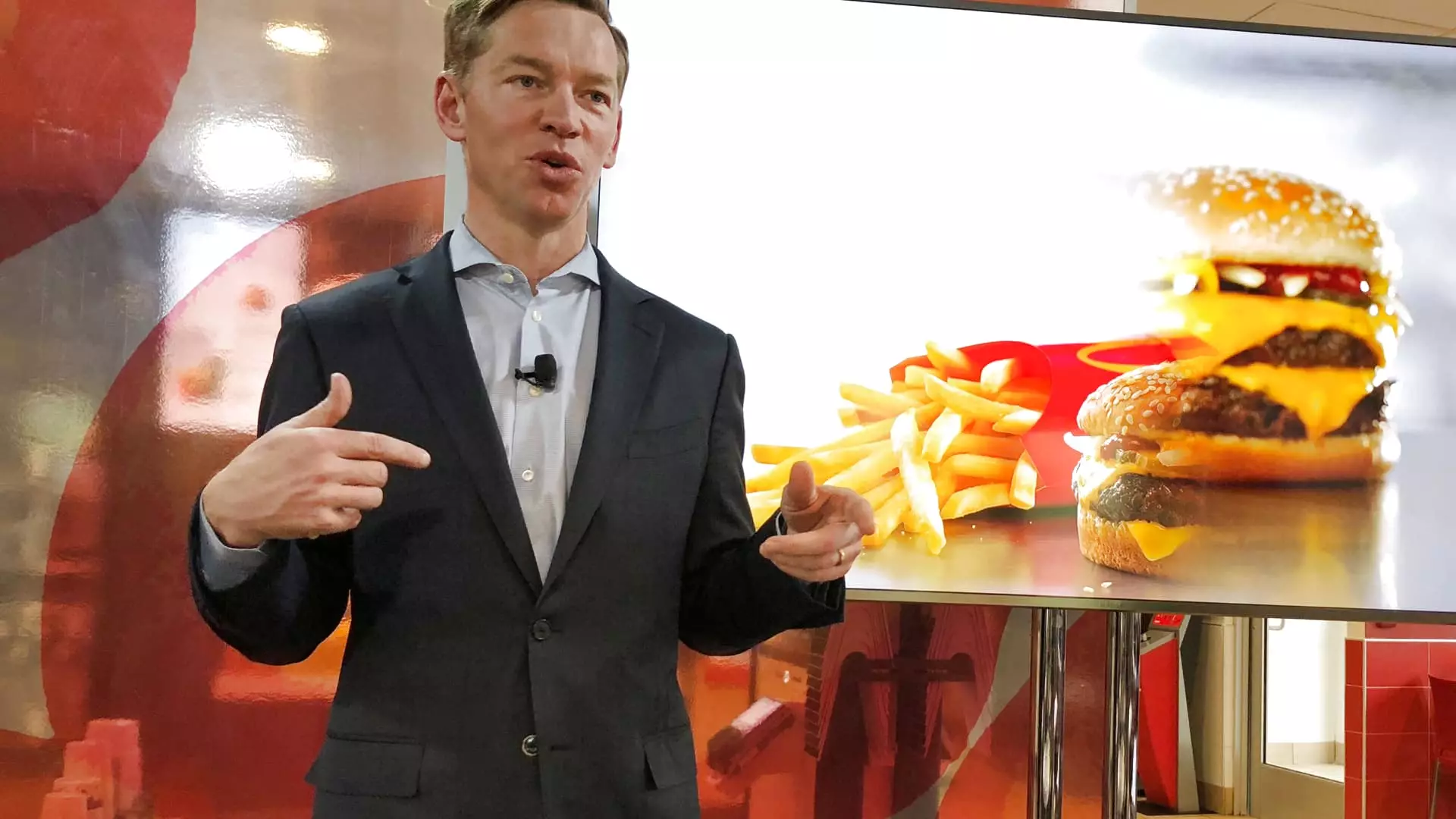The fast-food giant McDonald’s recently faced a significant challenge following its association with a deadly E. coli outbreak linked to its popular Quarter Pounder burgers. This event has far-reaching implications not only for the corporation’s operational strategies but also its brand reputation. With health authorities investigating the incident and its effects on customer behavior, McDonald’s executives have attempted to reassure investors and patrons alike.
In the days following the outbreak announcement, McDonald’s experienced a noticeable decline in daily sales and customer foot traffic. CFO Ian Borden highlighted that this decline was a direct response to the health scare that echoed through their U.S. operations. The effects were palpable; McDonald’s quickly withdrew the Quarter Pounder from approximately 900 restaurants, a decision aimed at prioritizing consumer safety. During this tumultuous period, CEO Chris Kempczinski publicly announced recovery efforts. He suggested that the most challenging aspects of this controversy were now behind them. However, while the public relations approach aimed to instill confidence, the underlying ramifications of these health concerns could linger in consumer minds.
Although health authorities found no E. coli in the burgers’ fresh beef patties, the source of the outbreak remains undetermined. Investigations pointed toward the slivered onions used in the Quarter Pounders as a likely culprit. Consequently, McDonald’s decided to sever ties with the supplier of these onions indefinitely. This proactive measure reflects an understanding of the accountability necessary in the food service industry, where consumer perception of safety can make or break a brand. By offering Quarter Pounders without the contentious onions temporarily, McDonald’s is taking steps to ease concerns and maintain customer loyalty.
Amid these challenges, McDonald’s strategy has pivoted towards rebuilding consumer trust. The emphasis on restoring confidence suggests that the company recognizes the delicate balance between operational stability and public perception. Executives have initiated plans to revive sales, using popular products such as the $5 value meal and the recently introduced Chicken Big Mac as centers of marketing efforts. The underlying message is clear: not only is McDonald’s actively addressing past mistakes, but it is also focused on future profitability by re-establishing a sense of normalcy in its product offerings.
While dealing with public relations issues, McDonald’s reported a modest increase in third-quarter same-store sales, up 0.3% compared to the previous year. Unfortunately, this growth came after a decline in the second quarter and was slightly below market expectations. Moreover, the overall same-store sales reduced by 1.5%, attributed to diminishing demand in essential international markets. Such contrasting performance metrics make it clear that while the U.S. market shows signs of recovery, the corporation still grapples with complicated global dynamics.
A particularly alarming aspect of the outbreak is the legal repercussions McDonald’s now faces. With reports indicating 75 health cases tied to the outbreak across 13 states—including one tragic death—at least three lawsuits have been filed against the corporation by affected individuals. Kempczinski has publicly expressed regret about the situation, acknowledging the emotional turmoil faced by those affected. His statements reflect a broader understanding within McDonald’s leadership of the importance of taking responsibility for public health issues and the necessity of rectifying past missteps to maintain their brand reputation.
Ultimately, the road to recovery for McDonald’s will not be easy. The company must navigate the dual challenges of restoring consumer confidence while addressing the fallout from litigation and the need for robust food safety practices. As they continue to adapt to consumer sentiments and market demands, McDonald’s must remain proactive and transparent. Only through sincere efforts to improve food quality and customer reassurance can they hope to emerge from this crisis with their reputation intact. As the fast-food landscape evolves, McDonald’s will need to learn from these experiences to fortify its position in a competitive industry.

